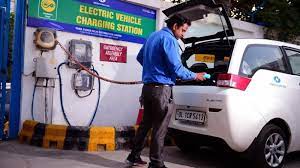CII report : Financing remains a challenge for electric mobility in India

As vehicle financing remains a challenge for electric mobility in India, it is imperative to present options that can help adjust the cost and bring EVs on par with the cost of internal combustion engine models, according to a CII report unveiled on Monday. The report, done in collaboration with OMI, is part of a series of reports on Roadmap for Future Mobility 2030.
To unlock the benefits of mobility-as-a-service (Maas), clarity on issues like bike taxis and the classification of bikes as commercial vehicles are required. Also, the benefits of bike taxis need to be highlighted in terms of decongestion, affordability for users (and thereby popularity) and providing more choices to consumers, the report suggested.
Strategies for promoting Maas should ensure seamless integration and offer multiple options to consumers to create the necessary nudge towards adopting shared mobility, it said.
“Vehicle financing continues to remain a challenge for electric mobility at large. It is imperative to present options that can help adjust the cost suitably and bring EVs on par with the cost of contemporary internal combustion engines,” the report said.
It also calls for introduction of a scrappage policy that builds upon the need to remove end-of-life vehicles (ELVs).
This scheme will help create an additional benefit for those commercial vehicles seeking to move towards electric vehicle adoption.
“Apart from the scrap value and the incentive currently given, an additional incentive over and above for the driver partners, particularly those who seek to make the transition will help to reduce the principal amount on the new vehicle and thus bring down the interest quantum to be paid out by the vehicle partner,” as per the report.
It has also recommended creating a ‘first loss fund’ mechanism to support increased lending for electric vehicle purchases.
First loss refers to a type of funding arrangement wherein a capital provider allocates to a separately managed account traded by the manager. The manager is required to provide investment capital of 10-20 per cent of the total managed account, which is usually matched by the first loss capital provider.
In this type of arrangement, the manager receives an elevated performance fee of 45-80 per cent of trading profits, with the higher percentage payouts often attracting a management fee accruing to the first loss capital provider, with the understanding that the fund manager absorbs the first losses, should these occur.



